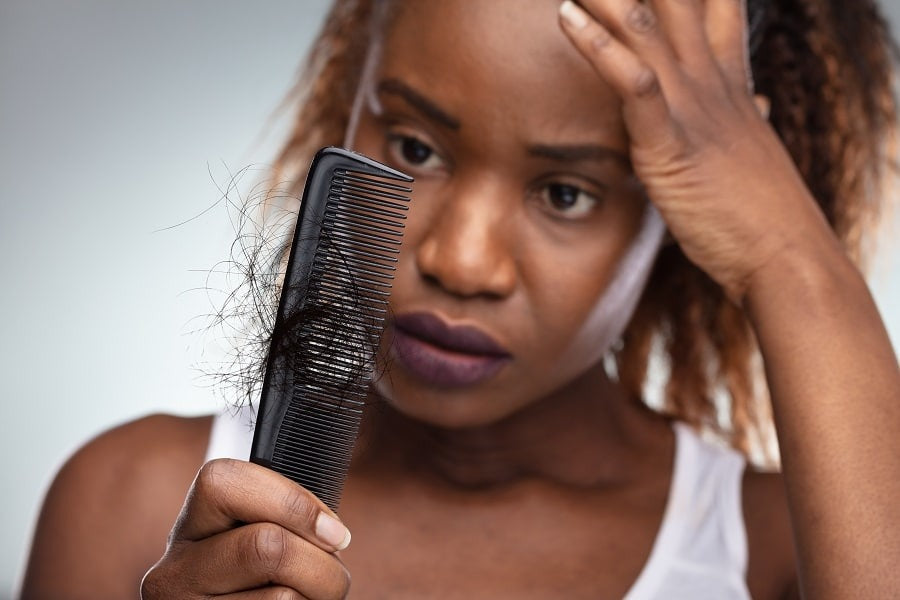How Does Hair Grow?
Hair is supported by blood flow, which requires oxygen and nutrients to promote cellular activity and new growth. As hair thrives within the follicle, it is lubricated by the sebaceous gland, secreting oil in the follicle, coating the hair to promote healthy growth and create luster and shine.
Proper nutrition is vital for healthy hair, requiring that blood and nutrients reach the papilla area. When fewer nutrients reach the papilla, hair cells reproduce at a much slower rate. If there is deficient blood flow and sluggish cellular activity the hair will suffer causing thin and poor quality hair.
What Causes Hair Loss?
At the helm of most hair loss issues are scalp disorders, medications, hormonal imbalance, physical and emotional stress, alopecia, poor diets, toxic bodies and genetics. There is also those experiencing hair loss due to mechanical abuse caused by chemicals, heating tools, weaving, extensions and abusive hair care. Sometimes the cause is a combination of factors. One person may lose hair due to a mix of stress and a recent surgery or medications. While Male pattern baldness (MPB), is the result of hormones and heredity, occurring in men who have a genetic sensitivity to the hormone dihydrotestosterone (DHT).
What is DHT?
DHT, or Dihydrotestosterone, causes over 80% of all hair loss. DHT miniaturizes hair follicles by shortening the anagen (growth) phase and/or prolonging the telogen (resting) phase. This causes the hair follicles to shrink and die over time. The results are an increased number of short, thin, fine hairs. The hairs are hardly visible above the scalp. Inhibiting DHT is necessary in order for the hair loss to subside.
The interaction of DHT with androgen receptors in scalp skin and follicles appears to cause male and female pattern baldness. The sebaceous oil builds up and causes sebum. Sebum collects in the hair follicle and hardens, causing a sebum plug that prevents hair growth. This action along with the remaining weak hairs causes increased reduction in hair growth.




